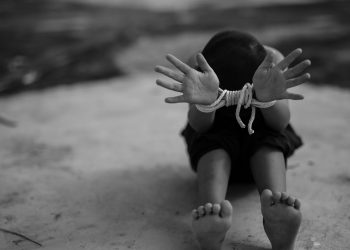Human Lives Human Rights: Throughout the history of Inquisition, there has been a rivalry between ecclesiastical jurisdictions and local secular jurisdictions. No pope succeeded in establishing complete control over the prosecution of heresy. Medieval kings, princes, bishops, and civil authorities all hesitated between accepting and resisting the Inquisition. The practice reached its peak in the second half of the 13th century. During this period, the tribunals were almost entirely free from any authority, including that of the pope. Therefore, it was almost impossible to eradicate abuse.
Abuses by various local Inquisitions led to reform and regulation by Rome and in the 14th century intervention by secular authorities became common. At the end of the 15th century, under Ferdinand and Isabel, the Spanish inquisition became independent of Rome. In its dealings with newborn Muslims and Jews, the Spanish Inquisition with its notorious autos-da-fé represents a dark chapter in the history of the Inquisition. In northern Europe the Inquisition was remarkably more benign: in the United Kingdom, it was never instituted, and in the Scandinavian countries it had hardly any impact.
Other types of Inquisitions in Medieval Europe
The second type of the Inquisition was the infamous Spanish Inquisition, authorized by Pope Sixtus IV in 1478. Pope Sixtus tried to reconcile between the inquisitors and the ordinaries, but was unable to maintain control of the desires of Ki ng Ferdinand V and Queen Isablella. Sixtus agreed to recognize the independence of the Spanish Inquisition. This institution survived until the early 19th century, and was permanently suppressed by a decree on July 15, 1834.
A third type of the Inquisition was the Roman Inquisition. Pope Paul III in 1542 established in Rome the Congregation of the Inquisition warning the spread of Protestantism and especially by its penetration into Italy. This institution was also known as the Roman Inquisition and the Holy Office. Six cardinals including Carafa constituted the original inquisition whose powers extended to the whole Church. The “Holy Office” was really a new institution related to the Medieval Inquisition only by vague precedents. Freer from episcopal control than its predecessor, it also conceived of its function differently. Some saw its establishment as an attempt to counter-balance the severe Spanish Inquisition at a time when much of Italy was under Spanish rule. Whereas the medieval Inquisition had focused on popular misconceptions which resulted in the disturbance of public order, the Holy Office was concerned with orthodoxy of a more academic nature, especially as it appeared in the writings of theologians. In its first 12 years, the activities of the Roman Inquisition were relatively modest and were limited almost exclusively to Italy. Cardinal Carafa became Pope Paul IV in 1555 and immediately urged a vigorous pursuit of “suspects.” His snare did not exclude bishops or even cardinals of the Church. Pope Paul IV carged the congregation to draw up a list of books which he felt offended faith or morals. This resulted in the first Index of Forbidden Books (1559). Although succeeding popes tempered the zeal of the Roman Inquisition, many viewed the institution as the cutomary instrument of papal government used in the regulation of Church order. This was the institution that would later put Galileo on trial.
In 1542 Pope Paul III established a permanent congregation staffed with cardinals and other officials, whose task it was to maintain and defend the integrity of the faith and to examine and proscribe errors and false doctrines. This body, the Congregation of the Holy Office, now called the Congregation for the Doctrine of the Faith, part of the Roman Curia, became the supervisory body of local Inquisitions. The Pope himself holds the title of prefect but never exercises this office. Instead, he appoints one of the cardinals to preside over the meetings. There are usually ten other cardinals on the Congregation, as well as a prelate and two assistants all chosen from the Dominican order. The Holy Office also has an international group of consultants, experienced scholars of theology and canon law, who advise it on specific questions. In 1616 these consultants gave their assessment of the propositions that the Sun is immobile and at the center of the universe and that the Earth moves around it, judging both to be “foolish and absurd in philosophy,” and the first to be “formally heretical” and the second “at least erroneous in faith” in theology. This assessment led to Copernicus’s De Revolutionibus Orbium Coelestium to be placed on the Index of Forbidden Books, until revised and Galileo to be admonished about his Copernicanism. It was this same body in 1633 that tried Galileo.
It was only in the 12th and 13th centuries that the term underwent a change in meaning. From now on, it designated both an extraordinary authority appointed by the Catholic Church and the procedure used by this authority to track down and prosecute religiously dissenting people, or so-called heretics. So, there is an institutional aspect and a legal procedural aspect to the Inquisition. The Inquisition was theologically anchored in the principle that there could be no salvation outside the Church (nullus salus extra ecclesiam). This principle had a long history within the Church, however, with the Inquisition, the decision about what was the ‘right’ faith was transferred from the ecclesiastical institutions, such as a council (the assembly of bishops and the pope) into the legal sphere.
The pope also laid down new procedural rules. These rules show the dawn of a more rationalist age: The aim of the trial became to research the material truth, or in other words, did the defendant actually commit the offense of which they were accused? This was in contrast to the earlier situation when the central point in a trial was whether a person was deemed trustworthy, and the perceived integrity of the person would be judged by ordeal or oath. The authority for this new kind of trial was placed in the hands of an extraordinary court, the Inquisition, which could now begin an investigation ex officio (without direct private charges). Only in a further development did this disciplinary process against clerics become the well-known Inquisition against heresy. From then on, the inquisitors had the exclusive mandate to find dissenters and to bring them – by all means – back to the Church. The goal here was always conversion, never the death penalty, which was only used as a last resort. The Inquisition aimed to convert, not only to save the soul of the accused, but also because it was feared that otherwise more and more Christians would be led astray.
When the inquisitors would arrive in a town, they would first collect any notorious rumors within the community about people engaging in heresy. They collected these rumors, because they could be used to establish a ‘bad reputation’ (mala fama), which meant that someone was already in public suspicion of sympathizing with the so-called heretics. If someone confessed in the run-up to the investigation, a penance (prayers or fasting) was imposed on them and they were warned not to transgress in the future. In the trial itself, among the core elements were anonymity of the informers, confidentiality of the written testimony, targeted interrogation forms, detention and torture. The punishments could range from penances, having to wear a distinguishing mark on their clothing, confiscation of goods, prison terms and excommunication. All punishments were considered a means to generate fear and terror in order to bring the convicted Heretic Burning on the Stakeback into the official Church. There were only two categories of heretics that would receive the death penalty: stubborn heretics who refused to turn back, and so-called relapsi, those that first recanted their heresy, but who later reoffended. They were transferred to the secular authorities, who were then obligated to impose the death penalty, that is, to organize burning at the stake. This cooperation was well paid and also in the interests of the secular authorities, so that the cooperation between the Church and the state almost always worked smoothly. The institution of the Inquisition, the extraordinary authority appointed by the Catholic Church, knew various forms, which developed under different historical circumstances.
From 1231 onwards, the pope appointed these special inquisitors, who, independently from the bishops (the usual judges in matters of faith) were now to fight the two most feared movements of this time, the Waldensians and the Cathars. These two groups held dissenting views and challenged the Church not only through their doctrine but mostly through their views on the Church’s hierarchy. From about 1233, this task was generally assigned to the Dominican order and a little later also to the Franciscan order. This Medieval Papal Inquisition was primarily active in France and Italy. There is still some debate, however, about from what time, and to what extent, the Medieval Papal Inquisition can be considered to have been a centralized institution.
The question of the number of victims of the Inquisition remains controversial. The protestant Samuel Clark in his book Martyrology of 1651 mentioned a number of 2 million Waldensian victims for the first half of the thirteenth century. There is no doubt that these figures are part of the so-called Black Legend, which highlighted the misdeeds of the papacy for the purpose of antipapist propaganda. In fact, it is hard to determine the number of people who were convicted by the Inquisition and even harder to determine the number of people that either died in prison or were condemned to death. The sources that have remained to this day are too limited to come to an accurate estimate.


















